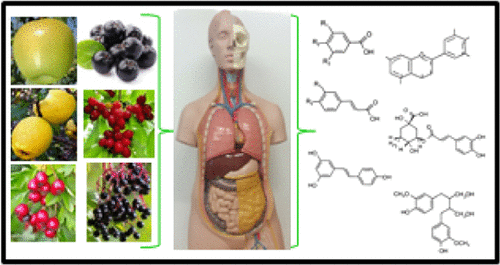当前位置:
X-MOL 学术
›
J. Agric. Food Chem.
›
论文详情
Our official English website, www.x-mol.net, welcomes your
feedback! (Note: you will need to create a separate account there.)
Influence of Food Matrix on the Bioaccessibility of Fruit Polyphenolic Compounds.
Journal of Agricultural and Food Chemistry ( IF 5.7 ) Pub Date : 2020-01-22 , DOI: 10.1021/acs.jafc.9b07680 Tomasz Tarko 1 , Aleksandra Duda-Chodak 1
Journal of Agricultural and Food Chemistry ( IF 5.7 ) Pub Date : 2020-01-22 , DOI: 10.1021/acs.jafc.9b07680 Tomasz Tarko 1 , Aleksandra Duda-Chodak 1
Affiliation

|
This study examined the bioaccessibility of polyphenolic compounds originating directly from fruits or from fruit extracts during their digestion conducted in a simulated human digestive tract. The results demonstrated that polyphenols bound to the food matrix are less bioavailable, but the type of food matrix plays an important role. Depending on the raw material, 14 to 58% of polyphenols present in fruit extracts were transferred to the supernatant, while in the case of polyphenols present in fruits, only 5-9% were transferred. Sediments obtained after in vitro digestion at the stomach and duodenum stage of fruit extracts contained virtually no polyphenols and demonstrated negligible antioxidant activity, whereas after digestion of whole fruits, the detected polyphenols constituted 5-44%. The intestinal microbiota were actively involved in the metabolism of polyphenols, mainly anthocyanins and glycosides remaining after the earlier stages of digestion.
中文翻译:

食物基质对水果多酚类化合物生物利用度的影响。
这项研究检查了在模拟人类消化道中消化过程中直接来源于水果或水果提取物的多酚化合物的生物利用度。结果表明,与食物基质结合的多酚的生物利用度较低,但是食物基质的类型起着重要作用。取决于原料,水果提取物中存在的14%至58%的多酚被转移到上清液中,而在水果中存在的多酚的情况下,仅转移5-9%的多酚。水果提取物在胃和十二指肠阶段进行体外消化后获得的沉积物实际上不含多酚,而且抗氧化活性可忽略不计,而整个水果的消化后,检测到的多酚占5-44%。
更新日期:2020-01-23
中文翻译:

食物基质对水果多酚类化合物生物利用度的影响。
这项研究检查了在模拟人类消化道中消化过程中直接来源于水果或水果提取物的多酚化合物的生物利用度。结果表明,与食物基质结合的多酚的生物利用度较低,但是食物基质的类型起着重要作用。取决于原料,水果提取物中存在的14%至58%的多酚被转移到上清液中,而在水果中存在的多酚的情况下,仅转移5-9%的多酚。水果提取物在胃和十二指肠阶段进行体外消化后获得的沉积物实际上不含多酚,而且抗氧化活性可忽略不计,而整个水果的消化后,检测到的多酚占5-44%。











































 京公网安备 11010802027423号
京公网安备 11010802027423号